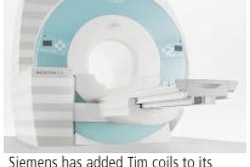CHICAGO - Radiologists said Sunday that magnetic resonance imaging should be considered as useful as CT for diagnosing invasive cervical cancer.
"MRI, like CT, is ready for widespread use in the staging of cervical cancer," said Dr. Hedvig Hricak, Ph.D., chairman of the department of radiology at Memorial Sloan-Kettering Cancer Center in New York City, in reporting results of the American College of Radiology Imaging Network/Gynecology Oncology Group (ACRIN/GOG) A6651 study at the annual meeting of the Radiological Society of North America (RSNA) in Chicago.
The researchers enrolled 208 women consecutively scheduled for cervical cancer surgery after International Federation of Obstetrics and Gynecology (FIGO) staging -- requiring equal to or greater than stage 1B. Of these women, 172 underwent 1.5-tesla MRI and spiral CT scans, and the exams were analyzed by eight radiologists, four who read the MRI scans and four who read the CT scans.
"The study found that MRI is significantly better than CT for tumor visualization," Hricak said. "We also found that MRI is better than CT for detection of parametrial extension (p < 0.05)."
In a second presentation at RSNA 2005, Dr. Donald Mitchell, professor of radiology at Thomas Jefferson University Hospital in Philadelphia, said that MRI proved better than CT in estimating the size of cervical tumors in women. The size was later verified following hysterectomy.
Mitchell's study was also part of the ACRIN/GOG trial. "MRI was superior to CT for measuring cervical carcinoma size and uterine extension, two important prognostic indications," he said. In all cases, the MRI readers were able to significantly distinguish the size of the lesion at the p< 0.0001 level. Only one of the CT readers could significantly tell the tumor size.
Hricak noted that interobserver variability tends to be a major concern in determining diagnostic and prognostic factors involving the use of CT or MRI. "Magnetic resonance interobserver variability is significantly less than with CT," she said.
"In staging cervical cancer, the strength of both CT and MRI is high specificity and negative predictive value," Hricak said.
"The superior soft-tissue contrast of MRI compared with CT allows it to better depict tumor margins," Mitchell said. "This advantage is more important for tumor delineation than for staging."
The trial was funded through a grant from the National Cancer Institute.
By Edward Susman
AuntMinnie.com contributing writer
November 27, 2005
Related Reading
Triple-modality approach effective against cervical cancer, August 31, 2005
Optical coherence tomography seen feasible for cervical screening, August 16, 2005
Cervical tumor volumes on FDG-PET predict treatment outcome, July 14, 2005
Copyright © 2005 AuntMinnie.com



















